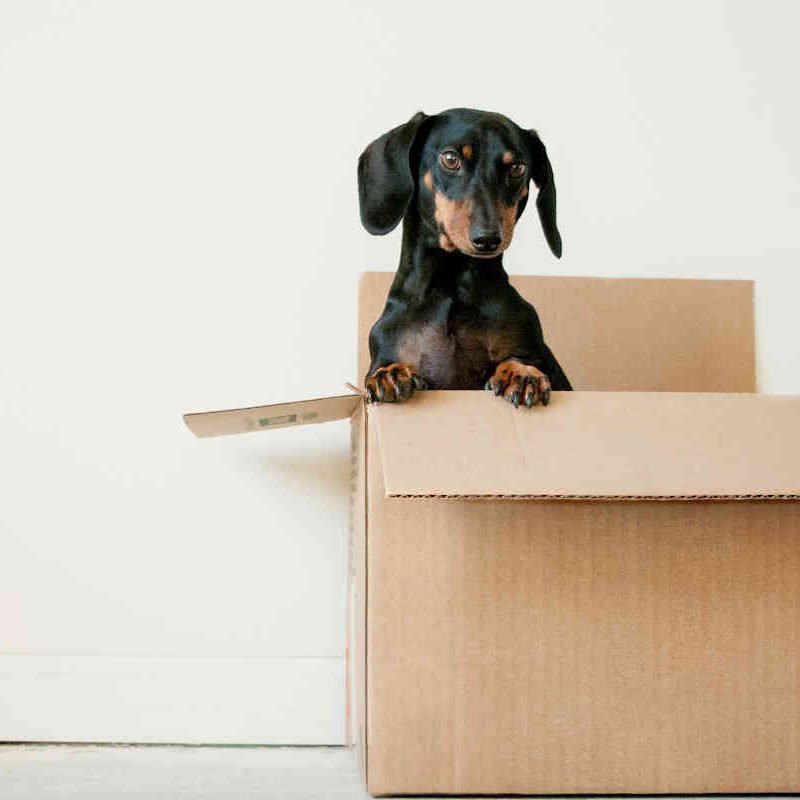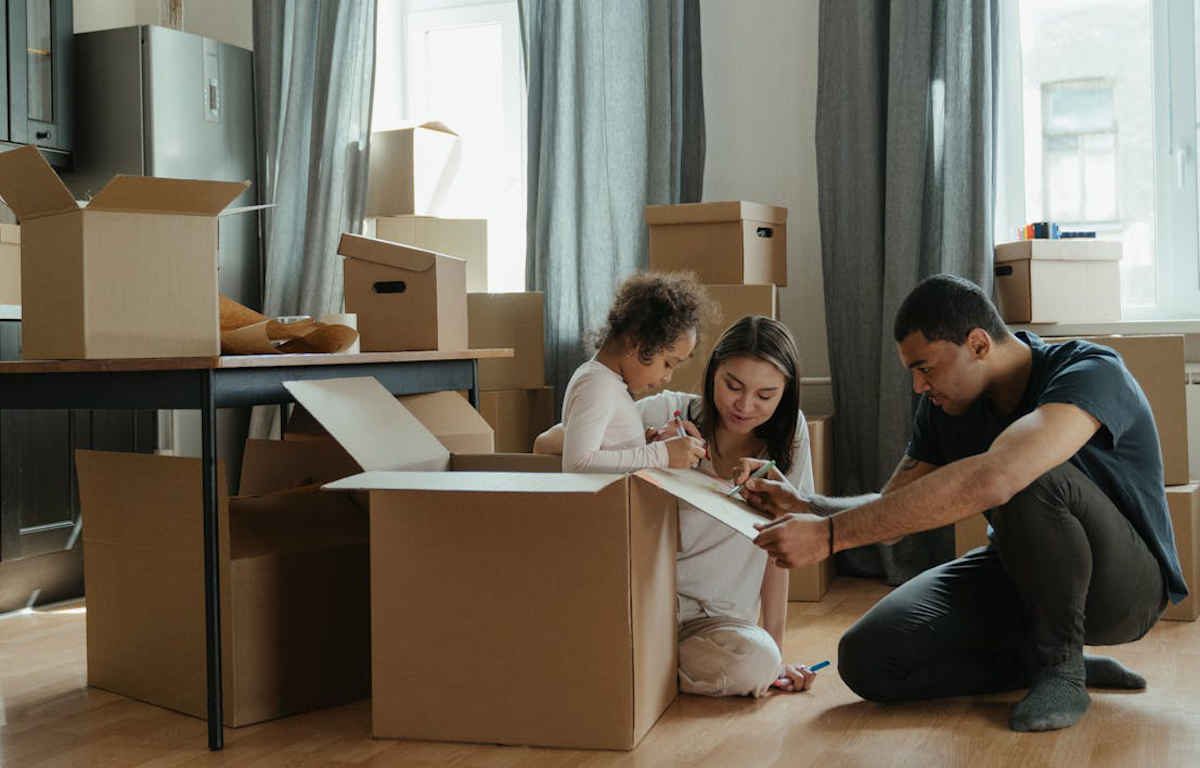Moving can be a major stressor in life. Most people have had bad experiences and dread having to do their next one. With the right tools and mindset to tackle this task, you minimize the unknowns and set yourself up for success. The first step in getting ready for a move is to approach the situation with a positive mindset. Rarely do people do this, and this leads to stress, before, during, and after the actual move. See this for what it is, a new beginning. Don’t focus on what you are losing, focus on the new memories and opportunities that will come from the move.
Planning
Get a checklist
Create a moving checklist for yourself to stay organized and not miss any steps. The more you prepare in advance, the easier it is down the chain. Just like any other goal you try to accomplish, moving is a major feat in planning and execution. Timelines will be critical to keep you on track, and if you live with others, make sure to split up the responsibilities.
Find a new home
If you don’t already have your new home, secure one as soon as possible. Sometimes moving is not by choice. You might get transferred to another city by your company, your family home is damaged in a flood or fire, or you need a different amount of space due to a growing or shrinking family. Regardless of the reason for the move, aim to move into a home that is a good fit for your needs. This isn’t always possible, but figure out what your must haves are to make the transition easier on you.
Logistics
Next, figure out the logistics of your move. Will you do all the packing and what do you need to pack things in? Are you hiring a moving company or relying on friends and family? If relying on people helping you out, do you need to rent a vehicle? Do you need to do the move on a certain day? What needs to be done to prepare your new home before you move in? And what about with the place you are leaving behind?
Don’t forget to clean the old and the new. Inspections upon arrival or departure may be required. Utilities need to be changed over to the new home. Your address needs to be updated for bills and accounts. Invest in mail forwarding for a few months to ensure you didn’t miss any changes.
Take care of you
Moving can be extremely emotional, especially on moving day, and that’s okay. Be grateful for the wonderful things your old home gave you and be excited for what your new home will bring. Preparing for the emotional rollercoaster that may ensue makes it easier to deal with on the day of the move. By having a plan in place, it will make it all smoother. Make sure part of the plan you create contains your self care pillars. Explicitly, have your support system in place, plan for nutritious meals, keep hydration top of mind, and schedule breaks.
Preparing For A Move
Once you have your moving checklist and your planning completed, it’s time for action! This stage is about doing as much in advance of the moving day, and make the best of an otherwise stressful situation.
Purge
Key to moving is to start the whole process as early as possible. Purge what you can, this is a great time to declutter. You can sell or donate gently used items, and toss what has no use. Take what you have left and start packing.
Pack
During the planning process you should have decided how you are going to pack and what type of containers you will use. I like packing one room at a time, and I use a variety of boxes and containers. It gives me a sense of accomplishing mini-goals, motivating me to keep going.
Take pictures of the contents of each box to have as backup if a box gets lost during the move. Or keep a detailed inventory of each box to know what is where when you get to the other side. At minimum, label the container as to which room it should end up in so that whoever is helping you with the move, can get that to the right room. It makes the unpacking much easier. Label your fragile items, and keep the weight of the containers manageable so nobody gets hurt.
To make moving day easier, also pack a bag per family member as if you were taking a short trip. This way toiletries and a change of clothes are easily accessible. At the end of a long day, the last thing you want to be doing is searching for things you need. And don’t forget about family pets and their basics too.
Another thing I like to do with my family is to pack an item in those bags that brings comfort. The kids normally take their favourite stuffed animal, and a toy to keep them busy. I like to bring my travel essential oils. Triggering a different sense after a long and stressful day can help bring focus to the moment, and it helps me melt into bed.
Identify the players
Confirm during the planning phase who you can rely on from your network, and whether or not you need to hire help. Have a clear conversation with everyone on roles and responsibilities. There is nothing worse than someone coming to help only to hijack your plans. Boundaries are important during high stress situations, so during this preparation phase, it’s a great time to set those expectations.
Moving day’s eve
Contact everyone involved in the move to make sure there are no last minute surprises. Prepare food and drinks for the day in advance, or designate someone to be in charge of this on moving day if access to a kitchen will be difficult. Don’t forget to confirm any dietary needs in advance to avoid any bad situations. Have some cash on hand for last minute purchases or for tipping movers if you use them.

If you have kids or pets, make sure you have a place for them to be during the move to limit their overstimulation. Having them go the night prior or first thing in the morning will help reduce worries during the move.
Of course, prepare your body for the big day ahead by being well rested for moving day. Moving is physically and emotionally demanding, a good night’s sleep will help you manage much better.
The Move
Regardless if you had weeks to get ready, or your move is thrust upon you suddenly, moving day will be hectic. Start the day by taking a few minutes to yourself to be mindful and acknowledge any emotions that may arise. Warm and stretch your muscles to be ready to be physically active. This also serves to calm your nervous system. Feed your body a good meal, and drink plenty of water. Review your plan and start loading!
When you arrive at your new home, take a moment to take it in. This is your new home! Make sure that if you labelled your boxes to go to certain rooms, each of those rooms should have a sign if it is not clear what room it is. That way, you are helping your movers get the boxes to the right room. Review your plan to make sure you are on track. This might also be a good time to eat, drink, and rest.
Once everything has been moved to your new home, prioritize what needs to be unpacked immediately. Set up beds, get the basics in your kitchen and bathroom set up, and unpack your day bags for each family member.
After Moving
Moving can be exhausting and that sensation can last a while. Modify your own expectations if it takes you longer to finish setting up your new home. Change is hard and it can take time to figure out how to make a new space work best for you. You may even feel isolated or sad, that is completely normal. It can be hard to get to know your neighbours and to get familiar with all the amenities of the area. Approach it all as new opportunities. By relying on your self care routine, the transition will be easier.
What moving tips do you have?
Moving is a major life stressor. By starting in advance, you can minimize the impact it has on you. By relying on your self care pillars and tools, you can develop a plan and prepare for a smoother transition. Taking time to be mindful before, during, and after the move will help you put things into perspective. Moving is hard because there are always unknowns and the loss of what was familiar. But by looking at it with a positive mindset, you can craft your home to become a place where you can recharge and create lasting memories.
IMAGE CREDITS: Feature image – Pexels | Cottonbro Studio. Article image – Unsplash | Erda Estremera.

